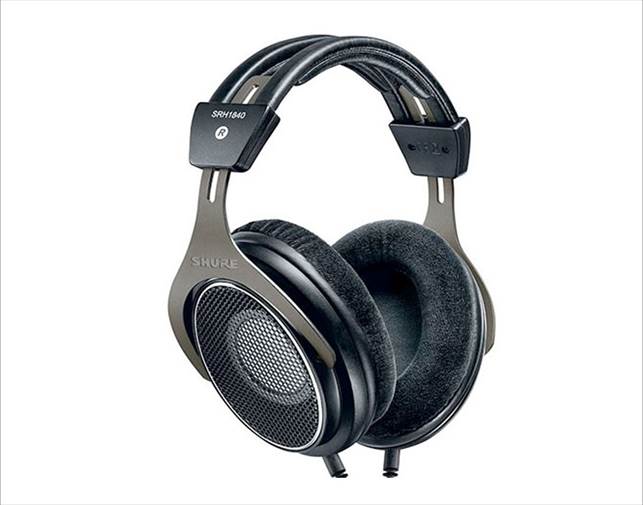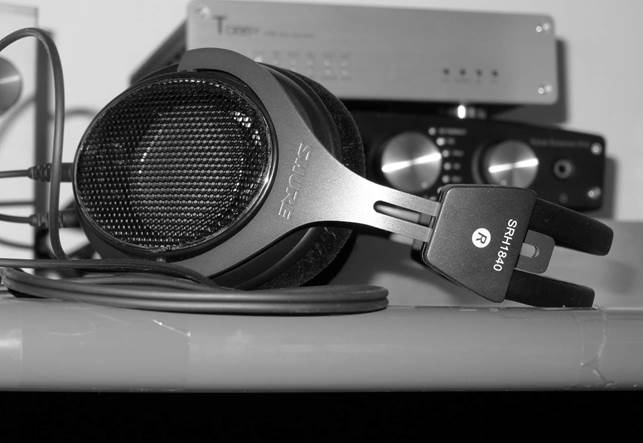The one-time doyen of pick-up cartridge manufacturers
is back in the audiophile mainstream with a range of headphones. Does this new
model rekindle past glories?
As more and more headphones are released which have
non-neutral tonal balances, so it follows that encountering a headphone that's
meticulous in its neutrality becomes rarer and rarer. Which is why, having
measured and briefly listened to the $780 Shure SRH1840 for a group test, I
nominated it for appearance here ASAP.
In recent months there have been two separate ‘assaults' on
headphone tonal neutrality, although in deploying that pejorative description
it's only right that I acknowledge that others view them more positively. The
first is the increasing application of bass lift that varies from the obvious
but bearable to the manifestly ludicrous: egged on to some degree by research
conducted at Harman International in Los Angeles and the National Research
Council in Canada which has concluded that - contrary to what I perceive - a
degree of bass lift actually sounds more natural to most listeners.

Shure SRH1840
first look
Renaissance man
The second development has been the renaissance of the
isodynamic aka planar magnetic headphone drive unit. Headphones thus equipped
don't, so far in my experience, mimic the elevated bass of the former group but
they do evince a suppressed treble output that endows them with a warm-toned,
smooth sound that some listeners clearly relish but which I find lacking in natural
detail and sparkle.
In what I take to be a rejection of both these camps,
Shure's top-of-the-range, moving-coil, open-back SRH1840 embraces instead the
‘old' ideal - old in years but not beyond its sell-by date - of a fiat
diffuse-field corrected frequency response.
Alternatively, don the SRH1840 and listen to some music and
it soon becomes apparent that fat bass and/or a reticent presence band are not
part of its offer. This is a product that Shure describes as ‘a professional
open-back headphone ... ideally suited to professional recording, mastering and
audiophile listening', and in this instance the reference to professional usage
- and its implication of strict tonal neutrality - isn't so much hot air.

The SRH1840 is
light in weight but claimed to be rugged enough for professional use. Stainless
steel and aircraft-grade aluminium feature in the materials manifest
One of the first things you notice when taking the SRH1840
from its hard-shell zip-up case is that it is light at a little over 300g including
cable with 'Ain jack plug adapter fitted, but gives the impression of being
sturdy in an understated sort of way. Partly as a result of its modest weight,
but also because of its low head clamping force, large and soft velour earpads
(spare pair supplied) and padded headband, it is also comfortable to wear.
Although the removal of the sleeve adapter allows the
SRH1840 to be connected to a mini-jack output, little suggests that Shure
considers this headphone appropriate for use on the hoof. The capsules don't
rotate fiat or fold up into the headband, and you'd need the voluminous pockets
of a poacher's coat to accommodate that large carrying case. The unspoken
injunction is: ‘use indoors'.
Principal design features, as listed by Shure, are: 40mm
diameter drive units with a neodymium magnet, steel frame and vented pole
piece; a fine stainless steel mesh immediately behind each driver (visible
through the black-painted capsule grilles) which presumably provides acoustic
resistance; ‘aircraft- grade' aluminium capsule yokes; OFC cable with a
Kevlar-reinforced sleeve for durability; and high density, slow recovery earpad
foam to enhance comfort.

Shure SRH1840 full
box
A spare lead is included along with the spare earpads (the
cables connect via colour-coded gold-plated plugs to sockets in the bottom of
each capsule), providing reassurance that the SRH1840 is indeed intended to
deliver long service. Resisting the temptation to wax lyrical about sound
quality, all that Shure claims is that its top model delivers ‘smooth, extended
highs and accurate bass' - preferable, if you ask me, to gushing descriptions
of supposed sonic nirvana.
A clean deep bass
If the first impression of the SRH1840 is its comfort, the
second, when playing music over it, is that it is not as sensitive as you might
expect. In part that's due to its nominal 65ohm impedance, which is somewhat
higher than that of many competitors, but even so, Shure's flagship falls
towards the lower end of the sensitivity spectrum for modern high-quality headphones.
Having said that, any headphone amplifier worthy of being partnered with it
should be capable of driving it to very high peak SPLs with ease, and it is
highly resistant to significant changes in frequency response incurred by
headphone sources that have a high output impedance.
Additionally, when you first listen to the SRH1840, as I
suggested at the outset of this review, there's an absence of tonal
hocus-pocus. There's no boom and tizz (no boom sans tizz, come to that) and no
undernourished presence band either. Instead the tonal balance is uncontrived,
convincing, natural.
This characteristic alone separates Shure's finest from the
herd, and a very welcome separation I find it. Bass freaks may claim that the
SRH1840 has premature LF roll-off but, as someone who always prefers a slightly
leaner, faster bass delivery to fatter, slower one, I don't agree. This
headphone delivers quite enough clean, deep bass to keep me happy.